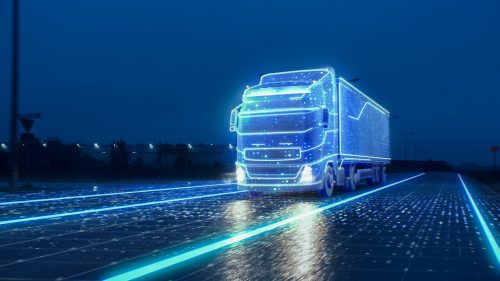 According to the National Census of Fatal Occupational Injuries, the trucking sector has the sad distinction of being one of the most dangerous occupations, with a death rate of 26.8 per 100,000 drivers—843 deaths in 2019. According to the National Highway Traffic Safety Administration, truck-related crashes would kill 4,895 persons in 2022.
According to the National Census of Fatal Occupational Injuries, the trucking sector has the sad distinction of being one of the most dangerous occupations, with a death rate of 26.8 per 100,000 drivers—843 deaths in 2019. According to the National Highway Traffic Safety Administration, truck-related crashes would kill 4,895 persons in 2022.
Keep reading to learn about the history of autonomous big rigs and their potential for causing accidents and injuries. If you have been injured in this type of truck accident, contact The Law Offices of Larry H. Parker at 800-333-0000 for a free legal consultation with an experienced personal injury attorney.
The history of self-driving trucks
The first self-driving or autonomous trucks were introduced to the market in 2017. Within the next two decades, more than half of small enterprises expect to have a fleet of driverless trucks. Self-driving trucks are now widely seen as the way of the future for commercial cargo transportation.
Self-driving trucks, according to manufacturers and advocacy groups, offer far higher safety and efficiency. However, this new and fast expanding technology raises a slew of questions and concerns, ranging from safety to market disruption to intricate legal difficulties.
When we talk about autonomous trucks and driverless technologies, what exactly do we mean?
Self-driving trucks traveling on public highways now have a driver in the cab, similar to aircraft that fly on autopilot with a pilot in the cockpit. Driverless vehicles connect with a computer using GPS and sensors, such as cameras and laser radar systems, to operate in specific conditions without a human driver.
The truck is driven by a computer, but a human driver can take over at any time and turn off the driverless technology as needed. California is one of the states that now allows this type of truck on the road for demonstration and testing purposes, albeit in a restricted capacity. However, fully autonomous trucks that operate without the presence of a human are just around the corner. In certain states, “supervised” test runs are already underway.
Driverless cars have a future feel to them, but the notion of sharing the road with a self-driving truck may be frightening to the average motorist. Nonetheless, the prospective advantages are considerable.
Driver error causes most vehicle accidents
According to statistics, more than 90% of road accidents are caused by driver error. Many variables can impair a driver’s judgment, reaction time, and ability to control the vehicle, including distraction, inexperience, drink or drugs, and, most importantly in cargo delivery, weariness. For these reasons, the contemporary trucking business is extensively regulated at both the state and federal levels, especially because accidents involving a huge rig are particularly dangerous.
Automation has the potential to reduce crashes by up to 80%
However, there are numerous possible dangers. The advanced technology that powers autonomous vehicles poses its own set of concerns, such as the possibility of computer failure, programming issues, hacking/cyber-attacks, and lithium-ion battery fire.
Furthermore, despite the dangers of human drivers, we have wonderful minds, incredible perception, and lightning reaction times. The benefit of human experience, engagement, intelligence, and split-second reactivity is lost when the human element is removed in favor of pure automation.
Sharp curves, barriers in the road, or a close driver changing lanes unexpectedly might all cause fully autonomous heavy rigs to encounter road or weather conditions they can’t respond to quickly enough. Trucks are difficult to stop or alter direction due to their enormous size and weight.
According to studies, every 8 miles, self-driving cars encounter a problem that necessitates human intervention. One of the issues with driver-assist technology, ironically, is that accidents occur when the technology gives the driver a false sense of security and the driver becomes disengaged.
Aside from safety, there’s the question of how a shift to autonomous trucks might affect the industry’s economy: fewer jobs for truckers, trucking companies going out of business, far less demand for truck stops and traditional maintenance services, automakers struggling to keep up with technological change, and so on.
If you have been injured in any type of vehicle accident in which someone else was at fault, contact The Law Offices of Larry H. Parker at 800-333-0000 for a free legal consultation.



